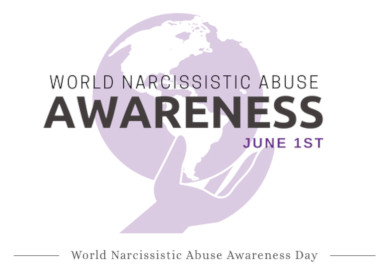Article from Issue #17 (January 7, 2020)
Malignant narcissist: Everything you need to know
by Lachlan Brown

In modern psychology, malignant narcissism is commonly used to characterize individuals who are ruthless, goal-oriented, and have a sense of importance or “specialness”, which is why it’s more associated with leaders, figureheads, and other individuals who have some form of success.
Traits Of Malignant Narcissists
Like other narcissistic subtypes, malignant narcissists display the same traits used to diagnose individuals with NPD.
Clinical diagnosis requires at least five of the following nine traits in order to clearly diagnose someone with NPD:
- They have an unwarranted sense of entitlement and pride
- They display arrogance towards others through beliefs and attitudes
- They tend to idealize situations and create fantastical situations where they are better than everyone around them
- They constantly need attention and recognition, and behave poorly when left ignored
- They are incapable of empathy
- They tend to lie about their personal achievements to make it more impressive
- They believe they are special and superior
- They have no problem taking advantage of others for personal gain
- They tend to envy others or believe everyone envies them
What makes malignant narcissists different is how their behavior crosses over to antisocial personality disorder.
A malignant narcissist not only enjoys inflating their self-image but consequently revels in putting other people down.
They have a tendency for destruction and will stop at nothing to pursue their own self-interests.
Experts consider the malignant narcissist to be the most toxic, dangerous, and traumatic of all NPD subtypes.
Because they tend to have antisocial personality disorder traits, they are even less empathetic than milder narcissistic subtypes and are more vicious and cunning when it comes to getting what they want.
Malignant Narcissism VS Other Types Of Narcissism
Because NPD occurs on a spectrum, it’s difficult to represent every single diagnosis. However, these three types of narcissism can represent the extremes along the spectrum and can help you understand how one subtype can vary from the other.
| Covert Narcissist | Overt Narcissist | Malignant Narcissist |
| Doesn’t mind being a team player but secretly dreams of being a team leader in belief they are better than everyone | Looks for leadership roles and outwardly expressed why they are deserving of it | Will not consider anything else but leadership roles because they believe they are the only one who can offer something special |
| Capable of apology, but often fake in order to preserve their reputation | Will refuse to apologize at all costs | Believes the means justify the ends, no matter who gets hurt in the process |
| Prone to feeling fragile and empty, as well as self-disappointment | Undeserved pride for imaginary or inflated sense of work and productivity | Ambitious, cunning, high-performing |
| Believes the world is ostracizing them because of their superiority | Believe the world should recognize them for their superiority | Makes sure the world knows them because they are superior |
| Self-conscious about reputation and can fake niceness to cover up wrongdoings | Doesn’t care about what anyone thinks, as long they think they’re superior | They think they are doing necessary evil and don’t care much about their reputation |
| Likes making their friends/partner feel guilty in the relationship | Asserts dominance over friendships and relationships | Feels like you’re in an unrequited relationship with someone dominant |
Malignant Narcissism VS Psychopathy
Experts often say that narcissism and psychopathy can appear indistinguishable from each other. Unlike other NPD types, malignant narcissists have a craving for sadism. They don’t have problems using cruelty, humiliation, and manipulation. More often than not, they enjoy doing this to other people.
However, what separates malignant narcissists and psychopaths is their ability to internalize their mistakes. If you ask psychopaths, most of them don’t view themselves as evil and are unable to reflect on their actions.
Malignant narcissists, on the other hand, are often aware of what they are doing, and yet continue to do it because they don’t care, or worse, because they enjoy hurting those around them.
Signs Of A Malignant Narcissist
1) Dependent Conditioning
Real-world example: Making you feel bad for spending time alone
What you might have heard: “It’s good that you’re taking time for yourself but I wish you would think how it affects me when you’re not around.”
How they want you to feel: Guilty. They want to condition you into being dependent on them.
Because they think they are superior beings, they believe you don’t need to cultivate a life outside the relationship, and should instead be focused on them.
Malignant narcissists believe they are better than anyone else, and find it hard to understand when you try to pursue relationships or interests outside your circle.
As a result, they start conditioning you into feeling guilty when you leave them alone, and often ask to spend more time together.
However, the effort isn’t always reciprocal. Victims might notice that they are staying at home more often than their partner.
This is because narcissists sometimes view their partners as safety zones; they feel scared that their partner will stop serving their needs once they find a better hobby, partner, or a support group, but find no problems going out and enjoying their own life.
2) Covert Insecurity
Real-world example: Downplaying other people’s achievements
What you might have heard: “What they did on that project was pretty cool, but I don’t think it’s anything original.”
How they want you to feel: Impressed by how smart they are.
They want you to feel like they should be your go-to source for everything. They’re competitive and always want to impress you, even if the situation has nothing to do with them.
While most malignant narcissists strive to be leaders, not everyone accomplishes this goal. Those who aren’t in high positions often feel discord caused by how they see themselves versus their actual real-world skills.
In order to make up for it, malignant narcissists may downplay other people’s achievements. Some might go a step further and put themselves in the conversation, either by citing how a person wouldn’t have been able to achieve their goals without the narcissist’s help.
These individuals are constantly looking to undermine other people and don’t have any issues doing so.
3) Bullying
Real-world example: Criticizing everything you do
What you might have heard: “I’m just trying to make you a better person.”
How they want you to feel: Needing them for advice, for every single aspect of your life. Bullying is a guilty pleasure for malignant narcissists because they think they’re turning you into a better version of yourself.
All the constant “improvements” and criticisms you go through could be a sign that you’re with a malignant narcissists.
These people think they set the standard for attractiveness, good behavior, and wealth, which is why they try to impose that on everyone else.
This manifests as pointless fights, personal arguments, and needless criticisms in the relationship. At times you feel like you’re walking on eggshells and are afraid to assert who you are because you’re worried they’ll have something to say about it.
As a result, you stay quiet and forgo your own instincts just to appease them and keep the peace in the relationship. You lose your sense of self and feel you have no place to speak up about how you feel.
Dealing with a Malignant Narcissist: Why Relationships with Malignant Narcissists are Incredibly Dangerous
Being in a relationship with a narcissist – whether a romantic relationship, a platonic relationship, or a family relationship – will always be difficult on the victim, but in most cases, steps can be taken to adjust the narcissist’s behavior and make the relationship better for both parties.
However, relationships with malignant narcissists are exponentially more dangerous and damaging than relationships with less extreme narcissists.
The difference is in the awareness: while most narcissists are somewhat unaware of the pain they are causing, malignant narcissists feed off of it, actively seeking to increase it at every turn.
The typical narcissistic cycle of abuse consists of four steps. These are:
– Feels threatened: The narcissist feels threatened due to an upsetting event – any form of disrespect, abandonment, neglect, rejection, or disapproval. They obsess over this event over and over again.
– Causes abuse: They take out their negativity and disappointment on their closest and easiest victim through abuse. This abuse can be emotional, spiritual, verbal, financial, physical, sexual, or mental, and its primary goal is to intimidate and trigger the victim at their most vulnerable areas.
– Plays the victim: Once the abused individual tries to fight back, the narcissist will switch roles and play the victim. This causes a second bout of abuse to the original victim, who is now manipulated into believing they 1) they deserved the initial abuse, and 2) they are wrong for attacking back. They end up agreeing with the narcissist after being guilt tripped, and even apologizing and begging for forgiveness.
– Becomes empowered: The narcissist wins, and the feelings of threat from the first step become replaced by feelings of empowerment. They renew their sense of superiority and feel stronger and better than ever before.
The typical narcissist will engage in every step of the abuse cycle step by step, as each step justifies and explains the next.
This is why most narcissists do not understand their wrongness, and believe everything they are doing is justified.
However, what makes a malignant narcissist so dangerous is that they do not follow the abuse cycle at all. Rather, they feed off the knowledge that they are actively causing pain to their victims.
They have no cycle that can be broken with certain methods and techniques – a malignant narcissist is simply on a path to see how far they can go before a victim will force them to stop. If the victim never addresses their abuse, it will simply continue until they are completely broken down, or worse.
Why Survivors of Malignant Narcissists Rarely Come Forward
We can’t further emphasize the danger of being with a malignant narcissist, and one of the reasons for this is that as a survivor of this kind of relationship, it can be very difficult to ever climb your way back up to a normal life and mentality.
Survivors of the abuse dished out by malignant narcissists rarely come forward, which further discourages others from recognizing and escaping from their own trauma-filled relationships. Some of the reasons for this include:
– It Won’t Make Sense to Outsiders: The best malignant narcissists cultivate a charming, admirable, and likable outward personality, and only showcase their abusive nature behind closed doors.
This makes it difficult for victims to prove to the world that their charming partner is actually a malignant narcissist, especially since the victim will seem emotional and unhinged due to long-term trauma.
– Victims Hide It Until They Can’t: If a victim comes forward and claims that their partner has been abusing them for years, people will often try to look at their history and reputation to find any signs of the abusive relationship
However, the nature of the passive and kind victim will have hidden away any previous evidence of abuse, as they might have previously hoped they could fix the relationship. Claims of long-term abuse thus, despite being true, rarely make sense.
– Society Tends to Look at Both Sides: When dealing with domestic problems in a relationship, society tends to empathize with both partners. We try to frame it in a way that we partially blame both partners.
When the victim reacts to the long-term abuse, we use that as a way to blame the victim, which is exactly what the abuser wants, claiming “equal mutual abuse.”
Abuse Techniques of a Malignant Narcissist
1) Abuse technique: Triangulation
What is it: Bringing in a third party into the conversation or argument. Sometimes this can be a manufactured love triangle
Why they do it: To unsettle the victim. If someone else agrees with the abuser, then the victim might start questioning their own beliefs
How to resist: Realize that everyone is being played in the triangulation. The third party being involved probably isn’t being told the entire truth
2) Abuse technique: Shaming
What is it: Making the victim feel ashamed of a behavior, characteristic, belief or attitude they have
Why they do it: It is used to destroy the victim from the inside, by making them doubt parts of their individuality that they thought they could be proud of
How to resist: Understand that they are doing it on purpose, and they are specifically targeting your most vulnerable sides
3) Abuse technique: Projection
What is it: Displacing responsibility of the negativity and pain caused by their behavior and putting it on the victim; while we all slightly do this, malignant narcissists do it with excessive cruelty
Why they do it: It is rare for a malignant narcissist to feel that they have done something wrong, but when they do, this is simply a defense mechanism to relieve themselves of their shame
How to resist: Don’t allow yourself to be convinced by their projection, and don’t project your own goodness and compassion onto them
4) Abuse technique: Nonsensical Arguments
What is it: Confusing, convoluted, and nonsensical arguments, involving ad hominem, circular conversations, gaslighting, and more
Why they do it: To make the victim lose track of the focus of the argument, when the narcissist knows that they are in the wrong. They provoke the victim into saying something wrong, and then cling into that to win the argument
How to resist: Don’t argue. Malignant narcissists aren’t trying to discuss a point; they’re trying to win, and they will do whatever it takes. So the only way for you to save yourself is not participate in the first place
5) Abuse technique: Mind Reading and Misrepresentation
What is it: Putting words in the victim’s mouth to make their arguments seem worse
Why they do it: This makes it easier for the abuser to win while arguing with the victim, because it gives the victim outlandish statements that they can’t support
How to resist: Don’t give in – just say “Those aren’t my words”, and clarify exactly what your arguments are
Looking at the Self: Are you the Perfect Target for Malignant Narcissists, and Why?
Accepting the fact that an important person in your life is a malignant narcissist can be incredibly difficult, so much so that many people do their best to never cross that line.
They end up making excuses for them, explaining away their behavior, or repressing it completely, leaving themselves to suffer in silence.
If you believe that your partner, friend, or family member might be a malignant narcissist, and that you might be trapped in an abusive relationship with them, one way to accept and truly believe your situation is to understand the kind of person that malignant narcissists are most attracted to, and why.
Simply put, malignant narcissists desire the perfect target for their abuse. The three most distinctive characteristics of a person who falls in a relationship with a malignant narcissist are as follows:
– You are insecure: Malignant narcissists understand the way insecurities claw at a person from the inside, so they seek out victims who are inherently insecure.
They would have much more difficulty manipulating people with fewer or no insecurities, as they would have nothing to twist on the inside.
– You always try fixing things: You have difficulty accepting that your person is a malignant narcissist because you have a messiah complex, in which a part of you does recognize their issues, but you would rather stay put and fix it with them instead of accepting the severity of their personality disorder.
– You aren’t great with confrontation: You are a passive individual, and making waves isn’t something you like doing. You understand that you are being taken advantage of, but you would rather weather the storm and hope it passes instead of standing up to your bully and confronting them.
All three characteristics can make a person the ideal target for a malignant narcissist.
But there is one more quality that a majority of partners of malignant narcissists share: a history of being raised by narcissist parents.
Those who are raised by narcissist parents tend to grow up seeking narcissist partners; this is due to a condition known as echoism.
Understanding Echoism, the Byproduct of Malignant Narcissism
Echoism was first coined by psychoanalyst Dean Davis in 2005, and has gained popularity over the last few years, with communities and organizations forming around the concept and helping people with echoism, known as echoists.
Echoists are characterized as being highly sensitive, emotionally intelligent, compassionate, and are all-around people-pleasers.
However, they are also most distinctly characterized as having little to no sense of self, with many echoists describing feelings of being invisible, not knowing where they are, and not being able to visualize themselves in their own home.
So what can cause a person to develop echoism?
Simply put, echoism is a byproduct of malignant narcissism and other forms of highly abusive narcissism.
The most common situations leading to echoism include long-term romantic relationships with narcissists, and being raised by narcissist parents.
The term comes from the lesser-known partner of Narcissus (from the Greek myth, the origin of narcissism), Echo.
Echo was a wood nymph who had fallen in love with Narcissus, but she had become cursed for her love, and could only echo his words instead of speaking her own.
Similar to Echo, echoists have difficulty grasping their own sense of self, and instead learn to depend on the narcissist in their lives to have feelings and meaning.
According to one echoist, “I used to go to the toilet a lot to look at myself in the mirror. This sounds very odd, it wasn’t a vanity thing – I was just checking that I was still there. My sense of self was so weak and I hated attention. I just wanted to be invisible.
Are You with a Malignant Narcissist? Don’t Fix It – Just Escape
With other types of narcissists, escape is typically the last resort. Experts will try to encourage individuals to help and fix the behavior of their narcissist partner.
Calming methods, defense mechanisms, and modes of reflection are taught to help narcissists understand the pain they are causing their partner, their family, and everyone else around them.
But malignant narcissists are unlike all other narcissists, and must be avoided at all costs. Unlike other narcissists, malignant narcissists are clearly aware of the pain they cause, and they feed off this awareness.
They manipulate, lie, and cause pain and anxiety because it gives them a thrill, and they will do this for as long as you let them.
If you find yourself in a relationship with a malignant narcissist, it’s time to move on. No matter how long it’s been and how much you have built together, you will continue to be with a partner who does not have your happiness in mind.
Prioritize you, and find the courage to make the final confrontation


 The Shocking Impact Narcissistic Abuse has on the Brain
The Shocking Impact Narcissistic Abuse has on the Brain Narcissistic Abuse Awareness Day June 1st Annually
Narcissistic Abuse Awareness Day June 1st Annually Repetition Compulsion: Why do We Repeat The Past?
Repetition Compulsion: Why do We Repeat The Past?